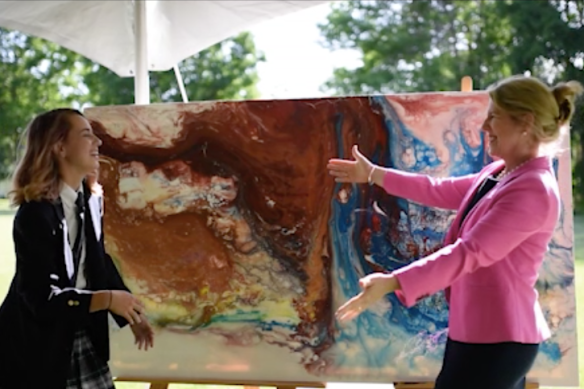Last week at The Opinicon, I did one of my favourite things: I spent time watching little children. (I hope that doesn’t sound too creepy!). As I sat enjoying coffee, I spotted three children, probably around the age of six, heading towards the park. It was one of those boiling hot July mornings, and two of the kids wore little tank tops, the kind with the spaghetti straps, and shorts. But one wore a long-sleeve – full length – jacket that was yellow, with a couple of red stripes, and when she turned around I saw that the back had big letters: “CHIEF.” I love that kids express themselves so openly and confidently, knowing what they want and going for it. Why let a heat wave get in the way of being chief?
The second scene was at the pool. There was a boy – younger this time, maybe three years old? – who jumped into his parents’ outstretched arms. I watched as he scrambled to get the water out of his eyes and recover a bit, and then he shouted a word familiar to every parent: “Again”. I stopped counting the number of times this exact activity occurred. Every parent has been in this situation – over and over. I remember the enthusiasm of Jacob and Kathleen in these moments in the pool or in the park or wherever, and I remember struggling to just go with the moment.
Now there was a time when I thought I would be a junior school teacher – I would spend my days laughing and being inspired by their passion and creativity. That quickly passed. The requirements of the job – like managing the energy and personalities of 25+ children in one room – made me realize that I was more suited to teaching teenagers.
But the individuality and passion of both children got me thinking – when those kids grow up to be teenagers, they will not express their feelings so openly. If they have been lucky enough to even discover their passion, they will more likely choose to try to fit in. It is just that stage of life. So there’s the fun part of my job. How do the best high schools create opportunities for teens to be fire chiefs and shout “again”? Three strategies come to mind.
People: Teens need inspirational adults – those who pursue their own interests while also proactively engaging them to figure out who they are and what motivates them. Teens don’t miss a beat; they listen and watch adults carefully, and they sniff out authenticity. Teens are most drawn to adults who know and can be themselves. The best schools understand this intuitively and invest in attracting, developing and retaining a variety of inspirational adults.
Place: Teenagers, especially, will take time to explore and connect with their environment. They might not express this until much later in life, but place matters. So the best schools invest in inspirational classrooms and spaces, both indoors and out. Having spent a year at Lakefield, I now understand the expression that the classroom is the third teacher. We see the benefits of being outdoors every day, and we know that teens thrive when their environment calls them to explore.
Programs: Teens need choice. Lots of choice. They need to pick courses and clubs and activities that they want to try, and if they don’t want to try, they need policies that require them to get involved. At Lakefield, as in all great schools, students are required to participate in arts and athletics, and they must engage in something every day after classes. We also encourage students to compete and push their limits.
When I recently saw a photo of one of our students winning the Dalglish Art Award, I was reminded that teens can find a way – when people, place and programs align – to express their passions and enthusiasms. Teens may not express themselves as easily or as frequently as children, but we need to work hard to support them.
And when they do, we should all pay attention.

